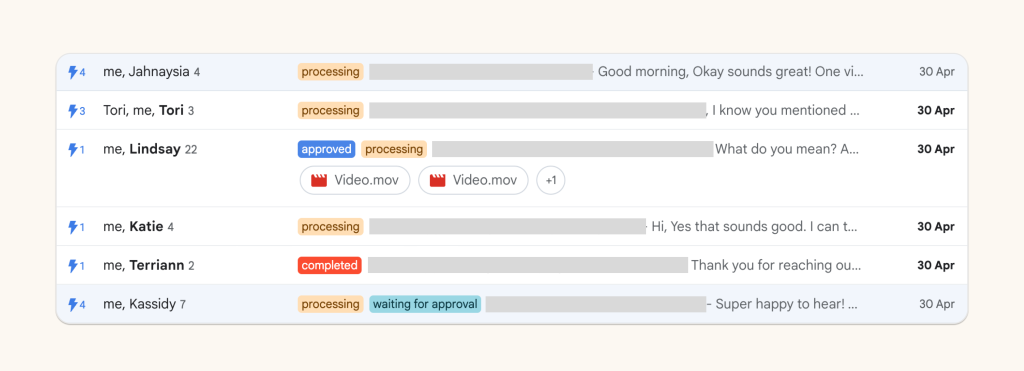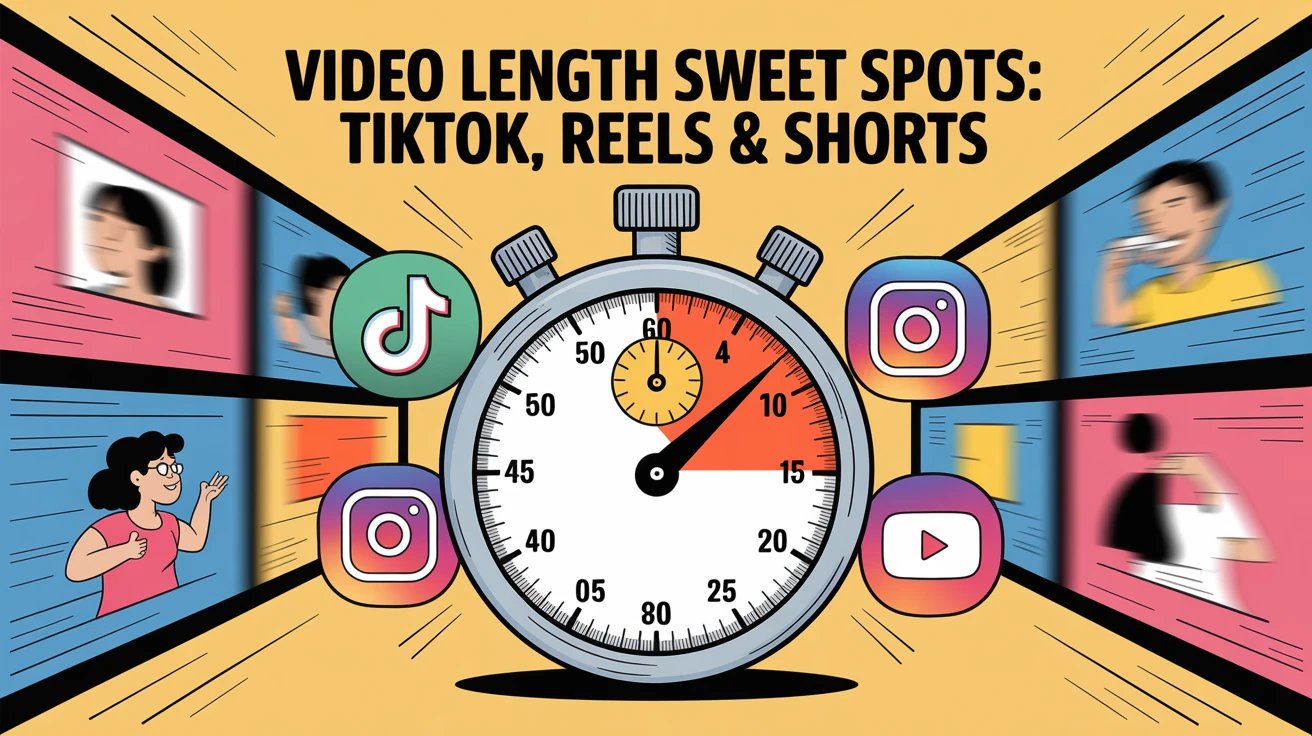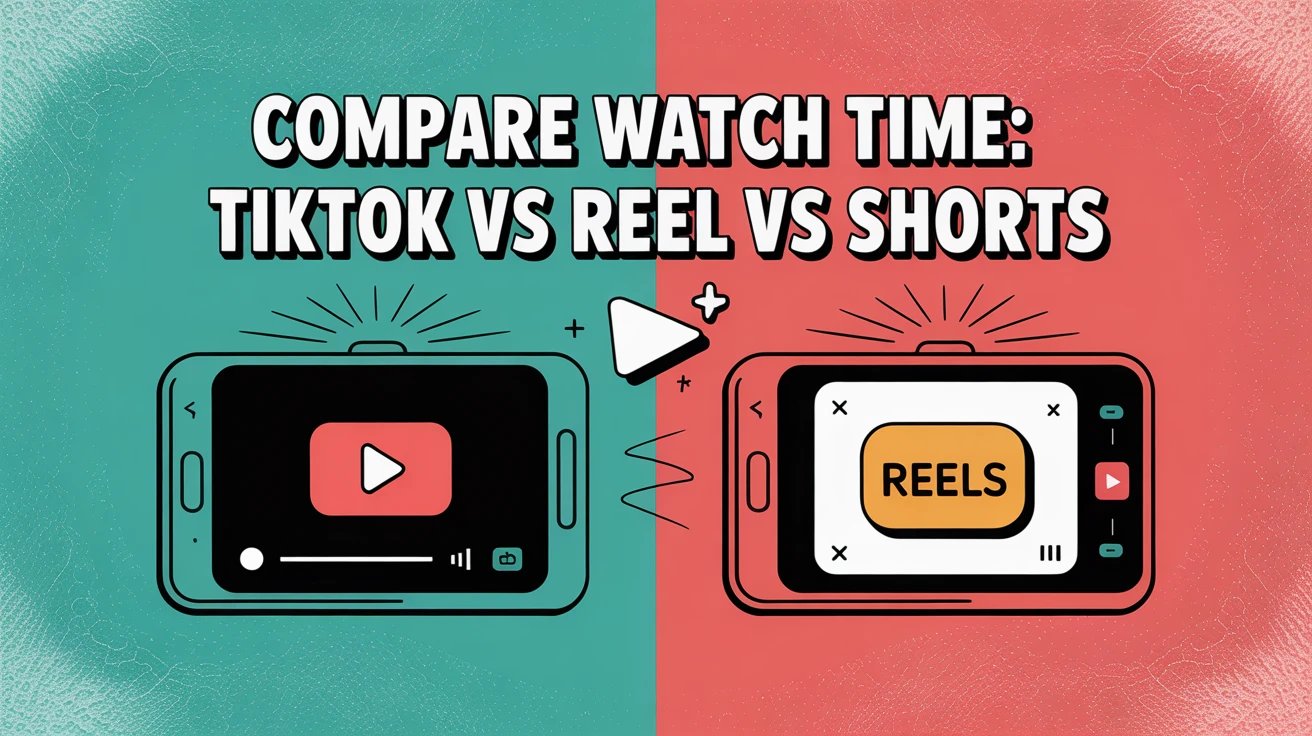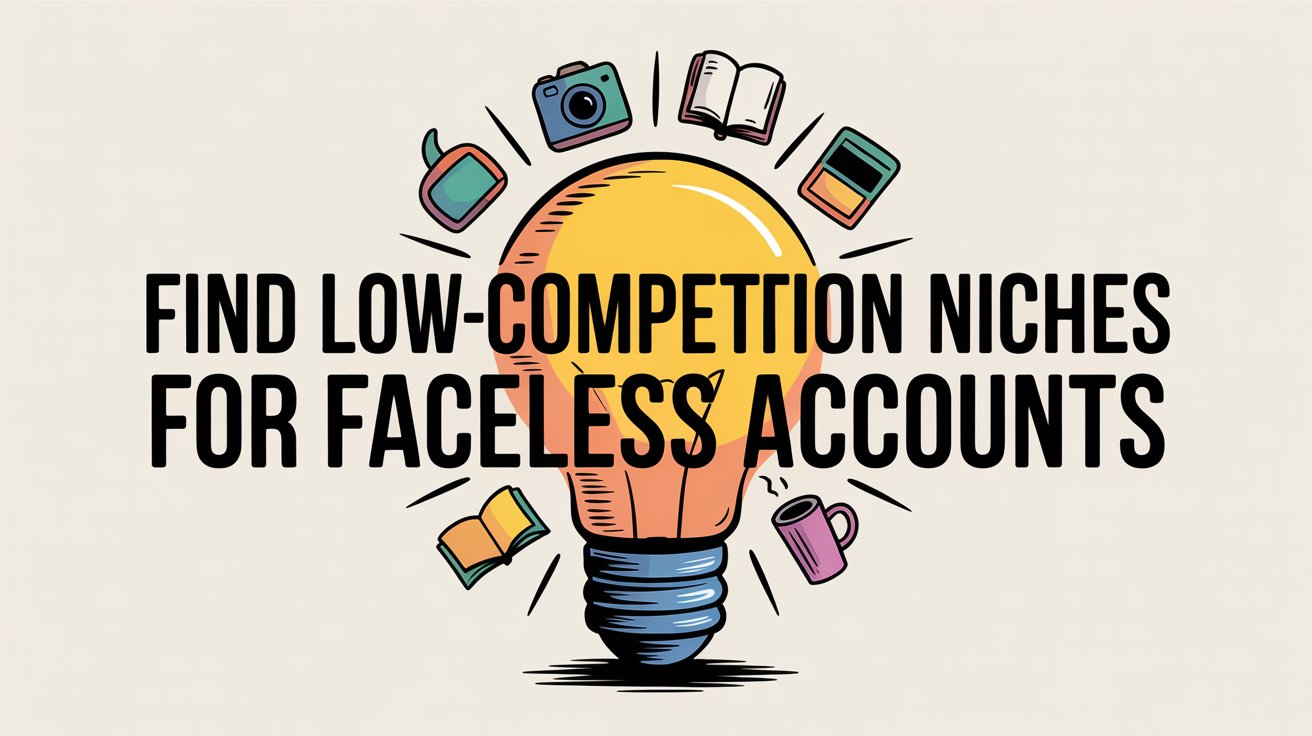Welcome to our in-depth guide on TikTok and Instagram influencer marketing. This series of five articles will provide you with advanced insights from running large campaigns for both consumer and B2B apps. By the end of this guide, you’ll have the keys to do influencer marketing at scale.
1. Everything on Finding Influencers

Finding influencers has always been challenging. The search bars within TikTok and Instagram don’t allow for efficient “harvesting” of data. If you’re looking to find just a handful of influencers, it’s manageable. But what if you need hundreds or thousands? Let’s explore different strategies for both small-scale and large-scale campaigns.
Small-Scale Campaigns: Manual Search
For smaller campaigns, you can use the main search function on TikTok or Instagram to look up profiles and videos through hashtags. Here’s how to make the most of this approach:
1. Use relevant hashtags to find potential influencers in your niche.
2. Once you’ve found a few influencers, try to identify their email addresses. The response rate is typically higher for emails than for direct messages.
3. Look for email addresses in their bio or through a Linktree.
4. If you can’t find an email, consider reaching out via direct message. Keep in mind that very few influencers use the TikTok inbox (it’s poorly developed), while Instagram DMs tend to have a higher answer rate.
Pro Tip: Once you’ve identified a target influencer, scroll through their followers to find more like them. Influencers often follow each other, making this a great way to expand your pool of potential collaborators.
Scaling Your Search for Large Campaigns
When you need hundreds or thousands of influencers, manual searching becomes impractical. Here are some strategies for scaling your search:
1. Use Influencer Databases: Platforms like FindMeCreators, Modash, Tokfluence, or GRIN can help you find influencers at scale. However, be prepared to pay hundreds of dollars a month for access to a limited number of email addresses.
2. Develop Your Own Database: While time-consuming initially, building your own database of influencers can be cost-effective in the long run. You can use web scraping tools or hire virtual assistants to help gather information.
3. Leverage AI and Machine Learning: Some companies are developing AI-powered tools to identify and categorize influencers based on their content and engagement metrics. Keep an eye out for these emerging technologies.
Remember, nano and micro-influencer strategies require a large pool of influencers to start with. You will lose influencers at every step of the process, so it’s crucial to begin with a substantial list.
Real-World Campaign Examples
To give you an idea of the scale and conversion rates you might expect, here are two examples from our recent campaigns:
1. Consumer Campaign:
– Emailed 10,000 influencers
– Achieved a 30% open rate
– 300 expressed interest (3% of total)
– 50 agreed and delivered videos (0.5% conversion rate from top to bottom)
2. B2B Campaign:
– Sent 2,700 emails to highly targeted B2B influencers
– Achieved a 70% open rate
– 25% response rate
– Negotiated prices with 600 influencers
– Finalized and released 50 videos
As you can see, the drop from initial interest to price negotiation is the largest bottleneck in the process. This highlights the importance of starting with a large pool of influencers and having an effective negotiation strategy (which we’ll cover in section 3).
Key Takeaway
While there’s no single “right” way to do influencer marketing, starting with a large pipeline of influencers is the most time-efficient and cost-effective approach. This allows you to account for the inevitable drop-off at each stage of the process and still end up with a sufficient number of successful collaborations.
2. Best Practices for Mass Email Outreach
Now that you’ve built your list of potential influencers, it’s time to reach out. Managing an influencer outreach campaign with thousands of emails can be daunting and discouraging. But don’t worry! We’ve developed a system to make this process as smooth and efficient as possible.
Setting Up Your Email Infrastructure
First, you’ll need a robust email system that can handle mass outreach. Here’s what we recommend:
1. Use an Email Marketing Platform: We use MixMax, a platform that plugs into Gmail, allowing us to send emails in batches. Start with 300 emails a day and gradually scale up to 1,000 a day as you refine your process.
2. Create Multiple Email Accounts: To avoid hitting sending limits or triggering spam filters, consider using multiple email accounts for your outreach.
Implementing an Efficient Labeling System

To keep track of hundreds or thousands of conversations, a well-organized labelling system is crucial. Here’s the system we use, with six different labels:
1. Processing: After you reply to their initial response, the process begins. They have entered the price negotiation phase and are waiting to move to the next stage.
2. Waiting for Approval: They have agreed on the pricing, and they will remain at this stage until they produce the first video for your approval.
3. Approved: After the video has been approved. Only pay an influencer after you’ve approved the video.
4. Paid: After payment is made. This is a formality but helps keep track of payments.
5. Completed: After everything has been posted and the process is over. At this point, remove the other labels.
6. Not Target: Use this label when you determine they do not match what your app/brand needs. Delete the thread afterward to keep your inbox clean.
7. Off?: While waiting for approval, you often have to nudge influencers again as they can be slow. If they are ghosting you or taking too long, use this label and remove them entirely from the process after a few nudges (this happens more often than you’d think).
Crafting Effective Email Templates
Having pre-made email templates for each phase of the outreach process is crucial for efficiency. Here are some tips for creating effective templates:
1. Personalization: Use merge tags to automatically insert the influencer’s name and other relevant details.
2. Clear Call-to-Action: Make it easy for the influencer to understand what you’re asking and how to proceed.
3. Concise Content: Keep your emails short and to the point. Influencers are busy and appreciate clarity.
4. Value Proposition: Clearly explain what’s in it for them. This could be monetary compensation, product samples, or exposure to your audience.
5. Follow-up Sequence: Create a series of follow-up emails for non-responders. Often, it takes multiple touchpoints to get a response.
Tools to Streamline Your Process
We personally use MixMax to plug into Gmail and handle the mass outreach and to manage our templates. They offer a free trial and an accessible monthly plan after that. However, there are other tools you might consider:
– Lemlist
Each has its strengths, so explore a few options to find the one that best fits your needs and budget.
The TikTok Ban: A Silver Lining?
You might be worried about the potential TikTok ban in the US, but don’t panic. In fact, you can use this situation to your advantage:
1. Increased Bargaining Power: For the next 9 to 12 months, you’ll likely be able to get much more for a lower budget. Influencers may try to maximize their revenue before any potential ban takes effect.
2. Higher Response Rates: You should see an increase in response rates as influencers seek to secure as many deals as possible.
3. More Flexibility on Pricing: More influencers may be willing to agree to your lower prices in light of the uncertain future.
4. Continued User Engagement: Users will likely continue using TikTok until the very last minute, so there’s no better time to get the word out about your app or product!
Remember, challenges often present opportunities. By being proactive and strategic, you can turn this potential setback into a significant advantage for your influencer marketing efforts.
3. Negotiating the Optimal Rate to Save Thousands of Dollars
Now we’ve reached my absolute favorite part of doing influencer marketing: negotiating the best rates. This process can save you thousands of dollars if done correctly. Let’s dive into the strategies and considerations for effective rate negotiation.
Understanding the Influencer Pricing Landscape
First, it’s important to understand that there is no standardized price benchmark in the influencer marketing market. It’s an extremely inefficient market where pricing is often estimated on the fly by the influencer. Their rates are typically based on:
1. Past collaborations they’ve had with deep-pocketed brands
2. Information they’ve read on blogs or heard from other influencers
As a result, 95% of the time, their initial prices are unbelievably high. But don’t be discouraged! This inefficiency creates an opportunity for savvy marketers to negotiate favorable rates.
Creating Your Own Pricing Benchmark
Instead of accepting influencers’ initial rates, you need to create your own benchmark. Here are three key parameters to consider before proposing a rate:
1. The influencer’s country of origin: For example, influencers from the U.S. typically start at a higher base rate than those from Nigeria.
2. Median views and hit rate: Look at the median views of their last 15 videos and their “hit rate” – their capacity to go viral at a certain 1/N video rate. (Pro tip: We use a free Chrome extension called tiktokprofile.com to easily access these statistics. It enhances influencers’ TikTok profiles, showing advanced statistics about the videos.)
3. Visual appeal and editing capabilities: This is more subjective but important. Consider how well the influencer’s style aligns with your product or brand, and assess their editing capabilities by watching a few of their videos.
Pricing Strategy Examples
For a consumer product looking at mass influencer marketing, here’s a general pricing strategy we’ve found effective:
– Start at $50 a video in the U.S. (We’ve even managed to get videos for $30 before, both in and out of the U.S., but fewer influencers agree to such pricing.)
– If they have less than 1k median views and less than a 1/30 hit rate, offer $50.
– If their hit rate is higher, and/or their editing capabilities seem better, slightly raise the rate.
– If they have between 1k and 5k median views, offer around $100 to $120 per video.
Remember, these are examples for short videos to promote a free-to-use mobile app. They will vary depending on the type of videos and products you’re offering. The best approach is to test and learn to discover the optimal pricing for your specific situation.
For B2B products, the budget per video is typically higher, especially as the target influencer is likely bigger with a tighter core reach.
Effective Negotiation Strategies
We’ve experimented with two main negotiation strategies:
1. Allowing the influencer to anchor their price: In this approach, you provide a brief and ask the influencer for their rate. However, this often results in receiving excessive rates and subsequently engaging in a negotiation battle. We’ve found this to be less effective overall.
2. Proposing your own rate: This is our preferred strategy. Here’s how it works:
– First, generate interest by asking them to agree to a detailed brief.
– Then, offer your own rate based on the pricing strategy you’ve chosen.
If they begin to argue about the price, you have two options:
a) Increase your offer by a few dollars, explaining that due to budget constraints, this is the maximum for the first video. Make a small concession towards them to show flexibility.
b) Stand firm and say, “Sorry, but that’s outside of our budget. Let me know if you’d reconsider; we really love your profile and would love to work with you.” This approach often proves effective, as many influencers will come back and accept your original offer.
Additional Tips for Successful Negotiation
1. Start Low: Remember, you can always increase your offer, but it’s hard to go down once you’ve named a higher price.
2. Use Scarcity: Mention that you have a limited budget for a specific number of influencers. This can create a sense of urgency.
3. Offer Non-Monetary Benefits: Sometimes, influencers are willing to accept lower rates if you can offer other benefits, such as long-term partnerships, exclusive product access, or cross-promotion on your channels.
4. Be Prepared to Walk Away: Not every negotiation will be successful, and that’s okay. There are always more influencers out there.
5. Avoid Managers and Agencies for Micro-Influencers: For micro-influencers, try to avoid engaging with those who have a “manager” or an agency behind them. They tend to be overpriced and troublesome, ultimately wasting your time.
Remember, you have significant leverage to negotiate prices downward. Don’t be afraid to use it!
4. Nudging, Video Delivery, and Handling Payment
Now that you’ve successfully negotiated rates with your influencers, it’s time to manage the content creation and payment process. This phase can be the most annoying part of influencer marketing, but handling it effectively will save you time and money.
Keeping Track and Nudging
The labeling system we discussed earlier becomes crucial at this stage. Here’s how to use it effectively:
1. Regularly check the ‘Waiting for Approval’ label. These are the influencers who have agreed to create content but haven’t delivered yet.
2. For anyone who’s gone silent, send a gentle nudge. A simple “Hey, just checking in on the progress of our video. Let me know if you need any help!” can often do the trick.
3. Be persistent but polite. Sometimes influencers get busy or forget, and a friendly reminder is all they need.
Remember, once you get a first draft, you’ve won half the battle. The rest is just refinement.
Managing Video Delivery and Approval
The quality of the videos you receive often depends on the clarity of your instructions. Here are some tips for smooth video delivery and approval:
1. Provide a Detailed Brief: The more detailed your brief, the better the first drafts you’ll get. Make sure to include:
– Exact instructions for what you want in the video
– Any specific phrases or hashtags to include
– Guidelines on video length
– Examples of videos you like (if available)
2. Quick Turnaround on Feedback: When you receive a video, try to review it as quickly as possible. Influencers appreciate prompt feedback.
3. Clear Feedback for Changes: If you don’t like the content, give clear, specific feedback for changes. For example, instead of saying “This isn’t quite right,” say “Could you increase the energy level and mention our product in the first 5 seconds?”
4. Be Open to Creativity: Remember, influencers know their audience best. If they’ve made creative choices that differ from your brief but seem effective, consider being flexible.
Handling Payments Efficiently
Managing payments for multiple influencers can be absolutely daunting, especially when dealing with dozens or hundreds of micro-influencers. Here’s how to streamline the process:
1. Choose a Payment Method: PayPal or direct bank transfers are usually the most efficient methods. They work across different countries and are familiar to most influencers.
2. Create a Payment Template: Develop a template email with step-by-step instructions for influencers to follow. This should include:
– How to generate an invoice
– What information to include on the invoice
– Where to send the invoice
– When they can expect payment
3. Consider Upfront Payments: To simplify the process, consider paying influencers upfront for multiple videos. For example, you might pay for three or four videos over a four-week timeframe after validating the first video.
4. Use a Tracking Spreadsheet: Create a simple spreadsheet to track video delivery and payments. This can serve as a homemade ‘CRM-like’ tool to ensure nothing falls through the cracks.
- Handle Tax Forms: If both you and the influencer are based in the US, you may need to handle tax forms like W-9s. Make sure to include this in your payment process and keep accurate records for tax purposes.
- Set Clear Payment Terms: Clearly communicate when payments will be made (e.g., within 30 days of video approval) and stick to these terms to build trust with your influencers.
- Consider Using a Payment Platform: For large-scale campaigns, consider using a platform specifically designed for influencer payments, such as Lumanu or Tipalti. These can help automate much of the payment process.
Remember, a smooth payment process can lead to better relationships with influencers and increase the likelihood of future collaborations.
5. Tracking Success and Scaling Your Efforts
In any marketing effort, tracking is crucial for determining what works and what doesn’t. However, with influencer marketing and short-form content marketing, it can be particularly challenging. Let’s explore how to effectively track your campaign’s success and scale your efforts.
The Challenges of Tracking Influencer Marketing
Traditional tracking methods often fall short when it comes to influencer marketing. Here’s why:
- Link and Voucher Code Tracking: While you can track outcomes through links or voucher codes placed in the ad, this method isn’t completely accurate. Many people often go directly to the app or product, bypassing the links in bios.
- Vouchers: Vouchers can be effective, but they’re not always suitable. You might not want to offer a voucher, or you might not be an e-commerce app.
- Analytics Uptick: In a marketing mix, doing a little influencer marketing won’t give you an uptick that you can attribute from your analytics. However, if you do a lot all at once, you will probably witness a noticeable change.
Shifting Focus: From Perfect Attribution to Virality
After years in growth and marketing focused on data-driven results, we’ve come to accept that perfect tracking isn’t always possible with platforms like TikTok and Reels. Instead, I recommend focusing on optimizing for virality.
Here’s why this approach works:
- These platforms are performing exceptionally well as acquisition channels.
- You can assume that a well-performing video will convert into users and sales.
- By tracking individual video performance and aggregating it into overall performance, you can still run effective data-driven growth strategies.
Tools for Tracking Video Performance
To track the performance of your influencer videos, consider using tools specifically designed for this purpose. For example, we built Shortimize while running campaigns of hundreds of videos a month for brands across dozens of different accounts.
With such tools, you can:
- Track performances of individual videos
- Monitor full account performance over time
- Aggregate data across multiple influencers and campaigns
This data can help you identify which types of content, which influencers, and which messaging are most effective for your brand.
Scaling Your Influencer Marketing Efforts
Once you’ve got a handle on tracking and have run a few successful campaigns, it’s time to think about scaling. Here are some strategies to consider:
- Automate Where Possible: Look for opportunities to automate parts of your process, such as initial outreach or payment reminders.
- Build a Network: Cultivate relationships with your best-performing influencers. They may be willing to create content more regularly or introduce you to other influencers.
- Diversify Platforms: While TikTok and Instagram are powerful, don’t neglect other platforms like YouTube Shorts or emerging social media sites.
- Repurpose Content: High-performing influencer content can often be repurposed for your own social media channels or even for paid ads.
- Continuously Refine Your Approach: Use the data you’ve gathered to continuously improve your influencer selection, content briefs, and negotiation tactics.
Bonus Growth Hacks
To further optimize your influencer marketing efforts and reduce the amount you spend per video, consider these growth hacks:
- Long-Term Partnerships: Establish long-term relationships with your best-performing influencers. This can lead to better rates and more authentic content as the influencer becomes more familiar with your brand.
- Content Licensing: Negotiate for the rights to use the influencer’s content on your own channels. This can provide you with a steady stream of authentic content at a lower cost than traditional content creation.
- Influencer Whitelisting: This involves gaining permission to run paid ads through an influencer’s account. It can significantly boost the reach and performance of influencer content.
- Micro-Influencer Networks: Build a network of micro-influencers who are passionate about your brand. They often have highly engaged audiences and can be more cost-effective than macro-influencers.
- User-Generated Content Campaigns: Encourage your customers to create content featuring your product. This can be a cost-effective way to generate authentic content and build community around your brand.
Conclusion
Influencer marketing on platforms like TikTok and Instagram can be a powerful tool for growing your brand and reaching new audiences. By following the strategies outlined in this guide – from finding the right influencers and negotiating rates, to managing content creation and tracking performance – you’ll be well-equipped to run successful, large-scale influencer marketing campaigns.
Remember, the key to success in influencer marketing is to start with a large pipeline of influencers, negotiate effectively, focus on creating viral content that resonates with your target audience, and continuously refine your approach based on performance data.
As you become more proficient in managing the end-to-end process, you’ll find that influencer marketing can be one of the most cost-effective and impactful channels for growing your brand. Don’t be afraid to experiment, learn from your successes and failures, and adapt your strategy as you go.
Thank you for reading this comprehensive guide. We hope you found it valuable and that it helps you unlock the full potential of influencer marketing for your brand. Happy marketing!



